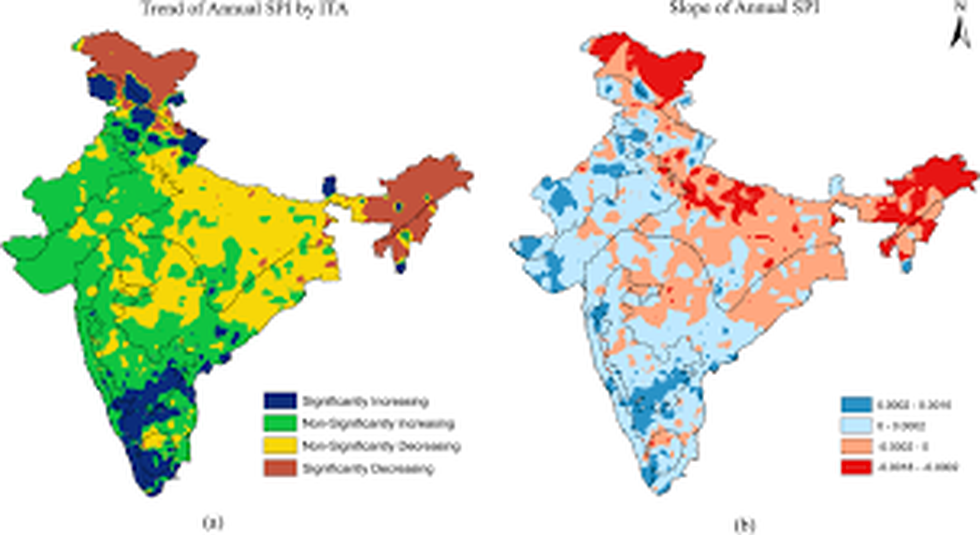About Standardised Precipitation Index:
- It estimates wet or dry conditions based on precipitation variables.
- The SPI calculation is based on the long-term precipitation record for a particular location and long-term period (longer than 30 years is desirable).
- This index is negative for drought and positive for wet conditions. As the dry or wet conditions become more severe, the index becomes more negative or positive respectively.
- Time scale: It includes timescales of 1, 2, 3, 6, 9, 12, 24, 36, 48, 60 and 72 months.
Key points about India Meteorological Department
- It was established in 1875. It is the country's National Meteorological Service and the principal government agency in all matters relating to meteorology and allied subjects.
- There are 6 Regional Meteorological Centres, each under a Deputy Director General with headquarters at Mumbai, Chennai, New Delhi, Calcutta, Nagpur and Guwahati.
- Mandate:
- To take meteorological observations and to provide current and forecast meteorological information for optimum operation of weather-sensitive activities like agriculture, irrigation, shipping, aviation, offshore oil explorations, etc.
- To warn against severe weather phenomena like tropical cyclones, norwesters, duststorms, heavy rains and snow, cold and heat waves, etc., which destroy life and property.
- To provide meteorological statistics required for agriculture, water resource management, industries, oil exploration and other nation-building activities.
- To conduct and promote research in meteorology and allied disciplines.
- Nodal ministry: Ministry of Earth Sciences (MoES)
- Headquarters: New Delhi.
